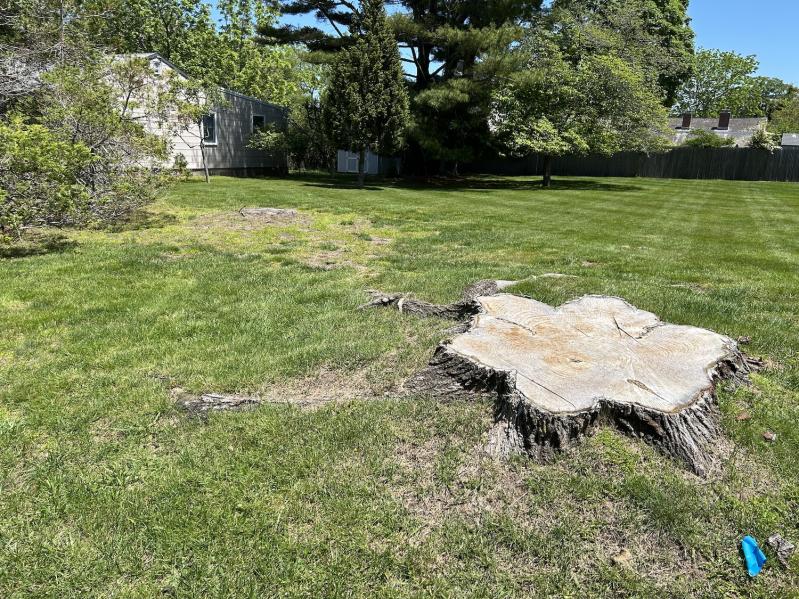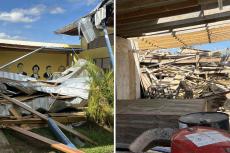A Sag Harbor property owner who was the first to run afoul last year of a new village law aimed at protecting trees of a certain diameter had her case back in Sag Harbor Village Justice Court on Tuesday, and this time progress was made toward a resolution of the case.
The village’s tree code stipulates that a permit is needed to remove trees whose diameter at breast height is over 12 inches. Penalties for violating the code include a potential fine of up to $1,000 for each tree removed. The village can also require that the property owner replace the trees with ones that have a similar diameter.
Augusta Ramsay Folks was called to task for having removed one tree from her Meadowlark Lane property and another from village property; one had a diameter of 36 inches and the other 48 inches. The case has been before the justice court since last summer.
Appearing virtually in court on Tuesday, Alex Kriegsman, Ms. Folks’s attorney, presented a settlement plan worked out the day before in collaboration with Brian Lester of the firm Tarbet & Lester, representing the village.
According to Ms. Folks, the trees were removed in deference to the Suffolk County Health Department, as she is putting in a new I/A septic system during redevelopment of the property. She had previously claimed that the roots of the tree would have interfered with the system as the ground is shallow.
Mr. Kriegsman told Justice Carl Irace on Tuesday that Ms. Folks would plant a 12-inch dogwood tree, where the village tree was, in addition to three new crepe myrtle trees.
Mr. Lester himself was not in court Tuesday morning, instead Nicholas Cortisidis represented the village, and while both parties appeared to be in agreement Mr. Irace wanted a physical representation of the plan, so it could be reviewed by experts in the village before he would issue a judgement.
Mr. Irace indicated that this was because he wanted any kind of remediation plan to be as fair to the village code as possible, and that there was more to the spirit of the code than just replicating the trees with ones of similar size.
Mr. Kriegsman stressed that Ms. Folks was not willing to pay for any extra materials that needed to be provided, including work done by environmental planners. He did say that he would make himself available to Mr. Lester or village employees who wanted to look at where the trees could be planted as well as inspect the trees.
However, Mr. Irace insisted that there be some document that can be analyzed. It could be a photocopy of a land survey that is marked up, anything that environmental planners could look at, with no charge to Ms. Folks.
Mr. Kriegsman insisted that his client is a good person trying to do the right thing and said that the proposal is a generous one. He also said that the cost of landscaping work to put in these new trees most likely eclipses any potential fine she could face.
Mr. Irace’s point, however, was that he did not believe he, or either attorney, could adequately judge if the plan was truly fair in terms of the decades-old trees being replaced, and he wants experts to weigh in.
Again Mr. Kriegsman stressed that the requisite information had already been provided, including photos of the new trees.
The hearing went along like this for about 30 minutes, with Mr. Irace requesting a physical plan, and Mr. Kriegsman insisting that his client had already provided enough information. Mr. Cortisidis also said that the village wasn’t looking for a comprehensive environmental plan.
Eventually Mr. Cortisidis suggested ending the hearing so that he or Mr. Lester could discuss the matter with Mr. Kriegsman outside of the court. The case was then adjourned until July 8.




